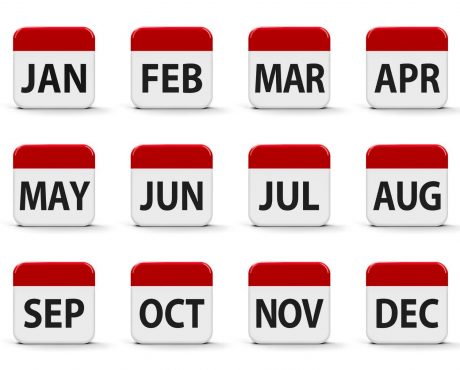Reinvesting Monthly Dividends
For income investors, the direct benefit of owning monthly dividend stocks is the convenience of getting paid more frequently. Because most of our bills are due monthly, it would be great to have a dividend income stream that can help pay those bills.
But for those who are willing to reinvest part of their dividend income, a more frequent payment schedule can also boost the already-impressive power of compounding.
As we have looked at in an earlier column, a dividend reinvestment plan (DRIP) allows investors to unlock the power of compounding and grow their wealth over time.
Most companies pay dividends on a quarterly basis. So when investors sign up for a DRIP, the dividends are also reinvested every quarter.
When you reinvest dividends from a monthly dividend stock, you are also using the power of compounding. The difference is that, instead of reinvesting quarterly, you are reinvesting dividends every month.
And over time, a higher compounding frequency can lead to higher returns.
Let’s take a look at a simple example.
An investor buys 1,000 shares of Company A, which trades at $100.00 per share. Company A pays annual dividends of $5.00 per share, so it has a yield of five percent. Suppose the investor decides to enroll in a dividend reinvestment program and reinvests all of the dividends into shares of Company A and keeps doing this for 10 years.
If Company A’s stock price remains unchanged during this period, the investor’s total investment would have a value of $162,889.46 at the end of the 10-year period.
What do you think would happen if the company paid dividends quarterly?
Well, as you can see from the following table, the total value of the investor’s original investment would be $164,361.95 by the end of year 10. That’s an extra $1,472.48 compared to what they would have earned if the company paid dividends annually.
| Year | Compounded Annually | Compounded Quarterly | Compounded Monthly |
| 0 | $100,000.00 | $100,000.00 | $100,000.00 |
| 1 | $105,000.00 | $105,094.53 | $105,116.19 |
| 2 | $110,250.00 | $110,448.61 | $110,494.13 |
| 3 | $115,762.50 | $116,075.45 | $116,147.22 |
| 4 | $121,550.63 | $121,988.95 | $122,089.54 |
| 5 | $127,628.16 | $128,203.72 | $128,335.87 |
| 6 | $134,009.56 | $134,735.11 | $134,901.77 |
| 7 | $140,710.04 | $141,599.23 | $141,803.61 |
| 8 | $147,745.54 | $148,813.05 | $149,058.55 |
| 9 | $155,132.82 | $156,394.38 | $156,684.66 |
| 10 | $162,889.46 | $164,361.95 | $164,700.95 |
Note that the only difference here is that, instead of making a $5.00-per-share payment at the end of each year, Company A paid four quarterly dividends of $1.25 per share.
And instead of reinvesting their $5.00-per-share dividend once a year, the investor reinvested the quarterly dividends of $1.25 per share every quarter.
If Company A pays monthly dividends, and investors reinvested those dividends every month, the effect would be even more amplified. At a monthly dividend rate of $0.4167 (calculated by dividing $5.00 by 12) per share, reinvested and compounded 12 times a year, the investor’s position in Company A would have a total value of $164,700.95 in 10 years.
That’s $339.00 more than the case with a quarterly payment schedule, and $1,811.49 more than the original case with annual dividend payments.
The key to note here is that, in the table above, the only difference between each column is the frequency in which the dividend is paid. In all three columns, the stock price stays at $100.00 per share, the dividends totaled $5.00 per share annually, and the investor started with 1,000 shares.
By moving from annual dividends to quarterly dividends, the investor was able to accumulate well over $1,000 of extra cash through the magnified power of compounding dividends.
And by changing the payment schedule from quarterly to monthly, the investors managed to build even more wealth with the same annual dividend rate.
Of course, this table does not mean that monthly dividend stocks are always better than annual dividend stocks.
In the real world, companies are rarely the same. When you have two companies with similar annual yields but different payment frequencies, chances are their businesses are also vastly different. In this case, it would be much more important to analyze each companies’ business model and financial health than focusing on their payment schedules.
Bottom line: When you own shares of a solid monthly dividend stock and don’t need to use the cash right away, reinvesting those dividends can be a great way to build wealth over time.
